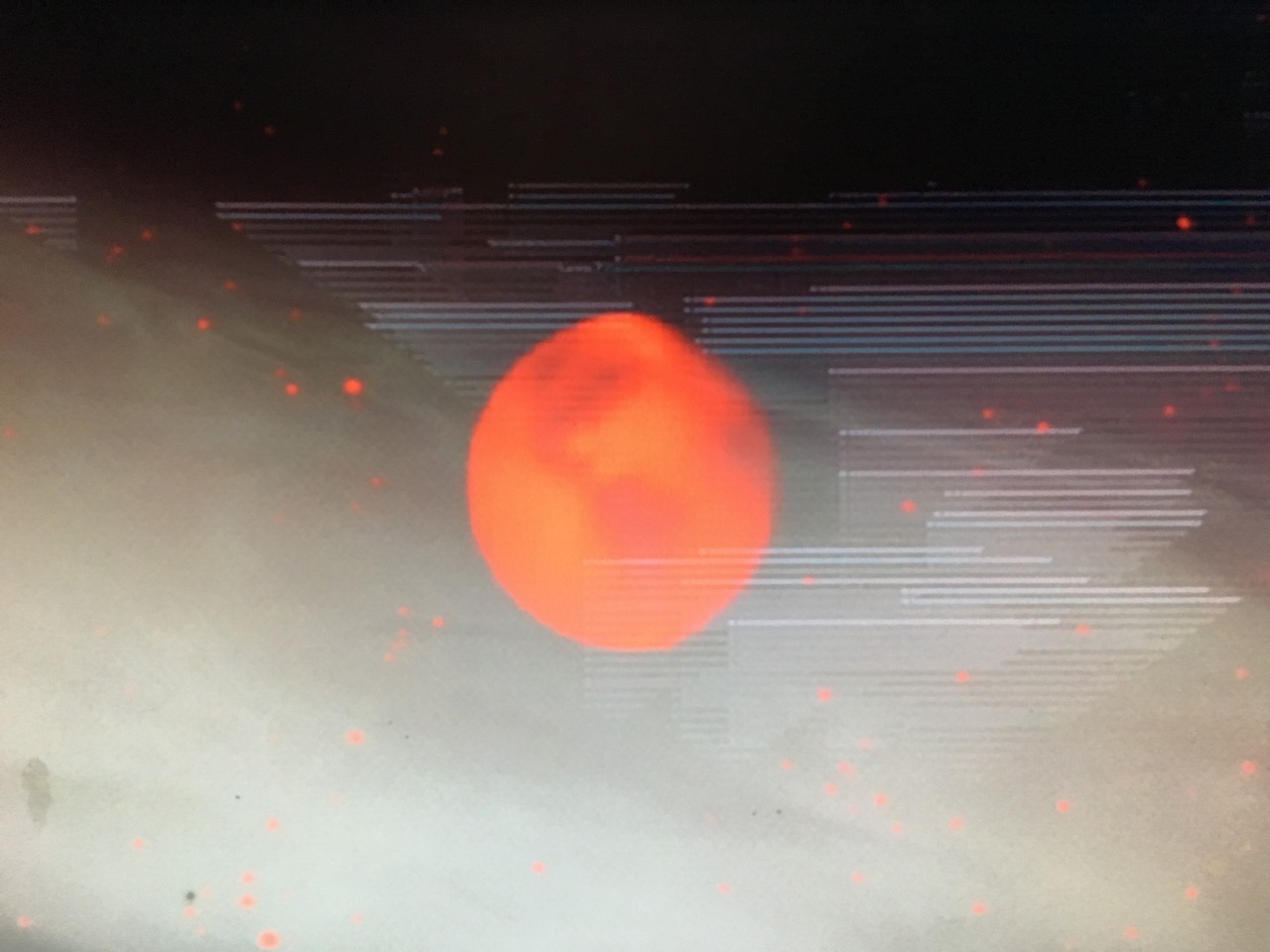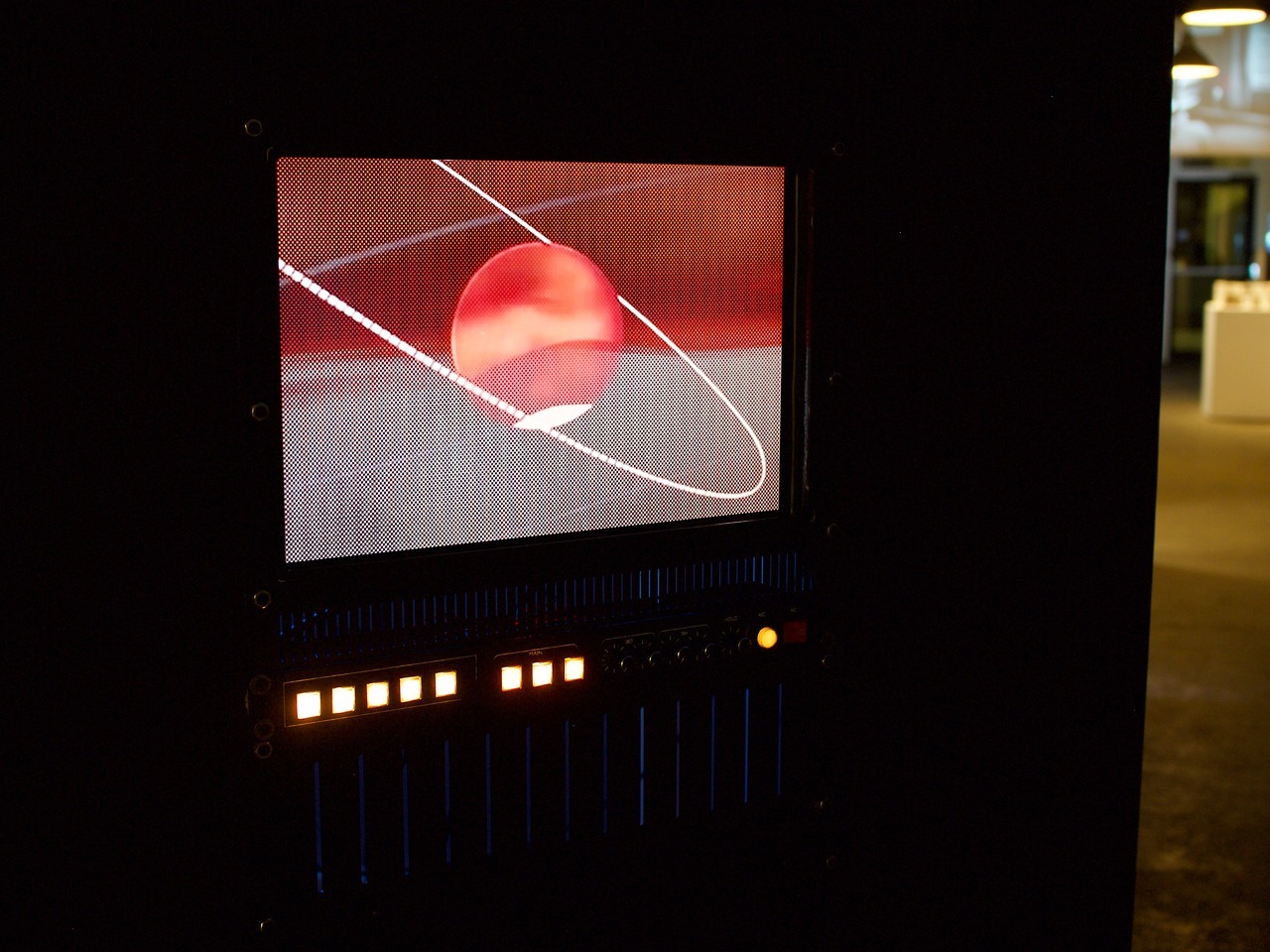Brandon A. Dalmer | Persistence of Vision
December 8, 2017-January 20, 2018
Opening reception: Friday, April 19 at 7 pm
Artist Talk | Saturday, May 11 at 2pm
Latitude 53 is pleased to welcome back Brandon A. Dalmer and his new work: Persistence of Vision. Inspired by syzygy, cosmic alignments, hoaxes, and Philip K Dicks’s fictional future religious practice of Mercerism, Dalmer’s monolithic octagon houses an immersive installation of audio, video loops, and lighting. Over a 108-minute orbital cycle, viewers can enter the capsule inspired by the pre-film Kaiser-Panorama stereoscopic animations and use the digital controls to experiment on images of asteroids falling endlessly towards virtual earths.
Here’s our interview with artist Brandon A. Dalmer about his work Persistence of Vision.
L53: Now being based in Toronto what made you want to exhibit in Edmonton again; why Latitude 53?
BD: Edmonton is my home town, so it’s always nice to show things to your fam. When I was planning this show out I really wanted to have it able to travel. I thought of Edmonton as a good test. If the show can travel back to Ontario with me than surely it can travel further. Latitude 53 is also one of (if not the oldest?) Artist-run spaces in Alberta, it takes a lot of risks on its programming and projects that might not be fully fleshed out have the opportunity to develop here. Plus I haven’t shown anything in your new space!
L53: You exhibited your work at Latitude in 2011. How do you think your work has evolved since then?
BD: I was only starting to combine scientific methods into my work back then. I feel like it’s something that’s fully entwined now. I was also creating a lot of miniature/diorama work, something that I’ve moved past. My work is more painting and installation based now. Focusing on coding and machines as collaborative partners in my process. My work is still heavily process based which is nice.
L53: What’s the significance of the viewer being able to directly interact with piece? What’s the reason for the capsule?
BD: The viewer is always really important to my work. I feel it’s them who really complete my work after it’s installed. I’m the type of person who really want’s to interact with work, I need a show to force me to ask questions while I’m experiencing it. If you’re not asking questions than it’s pretty easy to gloss over a show/piece. This project was really inspired by the Kaiserpanorama. A strange device that was invented prior to film. It allowed a number of viewers to sit or stand around it and view stereoscopic slides together. I really like the group dynamic that this must’ve formed with everyone participating. I thought that if you allowed the viewer to actually change and interact with such a device this would only strengthen that dynamic.
Read Shama Rangwala's critical essay about Persistence of Vision:
As climate crisis, the collapse of capitalism, and other harbingers of apocalypse threaten our species’ existence, our cultural imaginary often looks beyond our little planet to conceptualize the future. In this vein, Brandon Dalmer’s installation artwork Persistence of Vision takes us through interactive spaces and asks us to imagine a different kind of world, mediated by lo-fi video clips—a machinic form of art—that cycle through images of asteroids, planets, and gridded landscapes. While most of the installation is either fabricated or generated through an algorithmic process, the interactivity ensures that no two groups will experience Persistence of Vision in quite the same way: the potential futures are multiple.
Dalmer’s work asks us to consider moments of contingency in seemingly deterministic systems, that is, where clear causality is ruptured through chance or human vagaries. As your group gathers around the machine, you collectively choose what shows up on the screen. Through these selections, you can glean a sense of the many cycles in our world and solar system and implicate yourselves within them, becoming more aware of how algorithms and cycles—from days and seasons to the innards of smart phones—govern our existence.
Cycles repeat, but not in the same way. Entropy unravels trajectories almost imperceptibly; stray bodies interfere. How can we account for those small contingencies that accumulate over time and amplify with each repetition? More fundamentally, how do we relinquish the illusion of control and embrace what we cannot avoid? Celestial bodies move in cycles but collision is inevitable.
Yet what if asteroid collision is not something to be feared but rather embraced? What if the end of our species that such an event would bring about is not extinction but rather evolution or transformation? Asteroids could destroy the planet, but they also contain precious metals that could accelerate technological development.
In Persistence of Vision, space and asteroids stand in for what Dalmer views as the inevitability of automation: the technological development so beloved by capitalism could bring around its end. If automation results in the end of wage labour, what impact would this radical change in production have on social relations? Would we explore the universe and pursue self- actualization like in Star Trek, become blobs exiled from our garbage planet and carried around in chairs like in Wall-E, or indistinguishable from AI like in Blade Runner or Westworld?
In light of this pervasive automation, Dalmer asks the audience to consider whether a robot could replace humans in the realm of artistic creation. Can a program create something of artistic merit if it cannot exceed the bounds of its programming? What if a human calculated randomness into the algorithm? What forms of contingencies count for artistic creation? Does it have to come from some emotional core or is it sufficient that it represent the world in a novel way? Dalmer’s art does not endeavour to answer these questions here but rather to pry them open, and in the process make us open to the incalculable future—collision, automation, and even apocalypse—not as a threat but as a radically new and potentially beneficial configuration.
Dalmer posits his artwork as a collaborative creation; the programmed inputs and outputs of the algorithms form the basis of the work but the human interactivity affords variability in the audience’s emotional responses and interpretation. Moving through the installation space also requires audiences to consider their own embodiment. Indeed, this work takes its name from the optical illusion that occurs within the brain when observing repeated images, and thus it asks us to experience our bodies also as contingent systems that mediate our consciousness and the environment. Persistence of Vision foregrounds themes of determinism and contingency, imperfect cyclicality, humans and technology, artistic creation, and our changing place in the universe by moving us through spaces that confront our assumptions and open up future possibilities.
-
Shama Rangwala is a PhD candidate and instructor at the University of Alberta and editor of the culture and politics blog Pyriscence.



